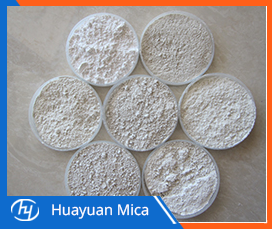Muscovite Mica is located in igneous, metamorphic, and sedimentary rocks . In igneous rocks, it's a main mineral that's particularly common in granitic rocks. In granite pegmatites, muscovite can be found in massive crystals using a pseudohexagonal outline. These crystals are known as"books" since they are sometimes divided into molds that are crochet. Muscovite rarely happens in igneous rocks of intermediate, mafic, and ultramafic composition.
Muscovite Mica Powder can form during the regional metamorphism of argillaceous rocks. The heat and pressure of metamorphism transforms clay minerals into tiny grains of mica which enlarge as metamorphism progresses. Muscovite can occur as isolated grains in schist and gneiss, or it can be abundant enough that the rocks are called "mica schist" or "micaceous gneiss."

Muscovite Mica Manufacturer tell you muscovite isn't particularly resistant to chemical weathering. It's rapidly changed into clay minerals. Tiny flakes of muscovite occasionally survive long enough to be incorporated into sediments and immature sedimentary stones. It's proof that these sediments and rocks have never been exposed to intense weathering.